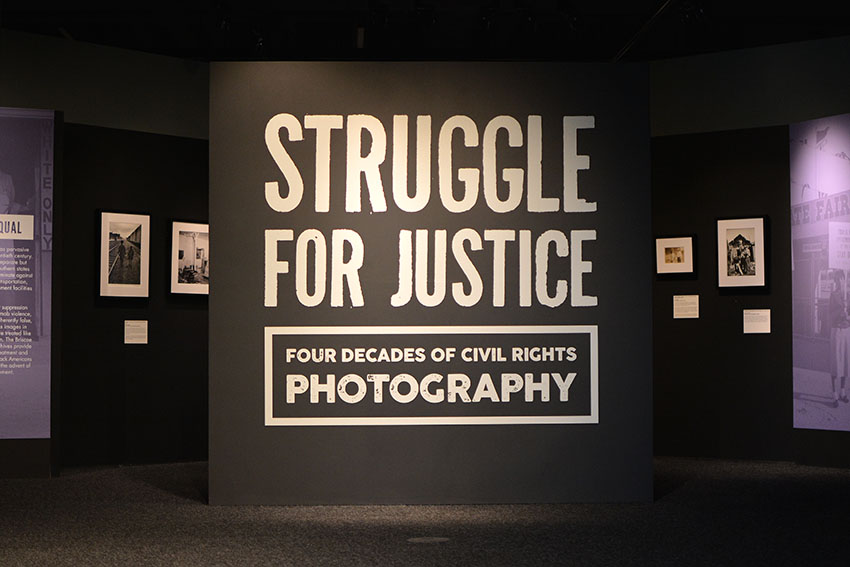The Dolph Briscoe Center for American History unveiled its newest exhibit, “Struggle for Justice,” on Friday. It’s the third exhibit to be featured after a nearly two-year long renovation of the center’s main hall.
The exhibit documents the Civil Rights movement of the 1960s with about 60 photographs and assorted documents from the Briscoe Center’s photojournalism collection.
Don Carleton, the center’s executive director, said the exhibit is not intended to serve as an exhaustive history of civil rights, instead focusing on showcasing the work of journalists.
“We have made an effort to acquire and preserve entire archives of individual photographers,” Carleton said. “That’s not something that most other institutions do. We’re different that way.”
Ben Wright, assistant director of communications, said the documentation of social injustice helped galvanize support for federal civil rights legislation in the ’60s. In the documentation process, photographers often found themselves in dangerous circumstances, Wright said.
“There’s a sort of debt of gratitude that Americans owe photojournalists for documenting the injustice,” Wright said. “I think they got a very compelling, beautiful, somewhat disturbing history of the civil rights movement.”
Radio-television-film senior Miguel Valarino said he appreciated the candid, sometimes behind-the-scenes portrayals of black leaders during his visit.
“Sometimes people see the civil rights movement as violent,” Valerino said. “But what’s represented here is the opposite. … Here you don’t see the violence; you see who they are and why they thought this was important.”
Wright said an interesting aspect of the exhibit is its placement right next to the Jefferson Davis statue exhibit. The statue was relocated in 2015 after being targeted for protests and vandalizations.
“You have these fairly different pieces of historical evidence displayed at the same time. That makes this exhibit intriguing and timely,” Wright said. “I think it says something about how diverse and varied American history is.”
Despite focusing on events from more than 30 years ago, the message of the exhibit still resonates, Valarino said.
“We haven’t achieved equality today, and when people who have the power see these movements and say the civil rights movement already happened, it’s like ‘Nope, there are still a lot of things to fight over,’” Valarino said. “And we can do that in a civilized way just as they did in the 1960s. But until we conclude that we still have inequality, these sorts of exhibits have to exist, be visible.”





















